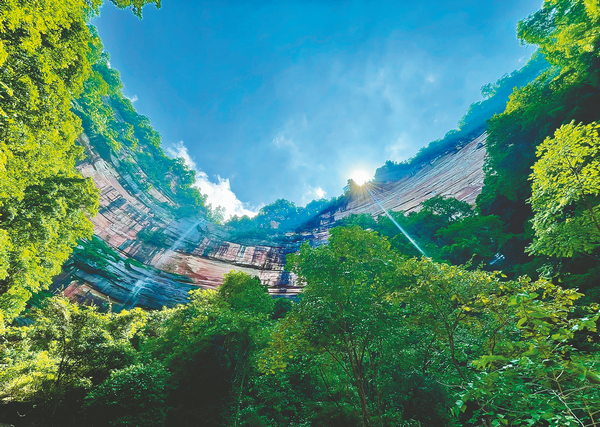

The unusual practice, listed as national intangible cultural heritage in 2021, was introduced as a competitive event at the 9th National Traditional Games of Ethnic Minorities in 2011.
Xiong says that in the Chishui River area, where bamboo covers the mountains, people used to cross rivers on bamboo stems.
"Traditionally, transportation in our township relied heavily on river channels, as roads were not very convenient," he says.
The practice arose from the transportation of bamboo by river to nearby Sichuan province and Chongqing. People lashed stems together with small strips of bamboo, creating rafts that they then floated downriver. Xiong says the trouble with this was that the rafts could easily break apart.
"So people would use poles to pull the bamboo back, jumping back and forth frequently. With practice, they became skilled at drifting along rivers on bamboo," says Xiong.
The bamboo has to be a green moso bamboo, which is more buoyant and lasts longer. Xiong says that green moso is thicker and grows straighter, so it creates less resistance, allowing it to travel faster, and was unbundled in the river for transportation.
"When I first saw people doing single bamboo drifting, I found it very interesting," he says, adding that he began to learn how to do it himself in 2018.
The practice relies on balance because each stem of bamboo has a different degree of curvature and so finding the point of balance is vital.